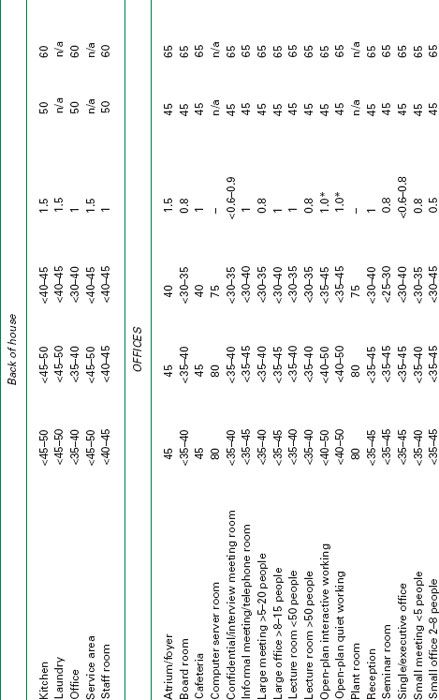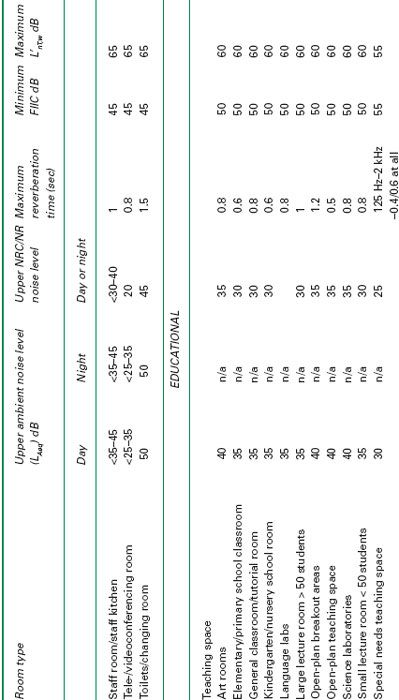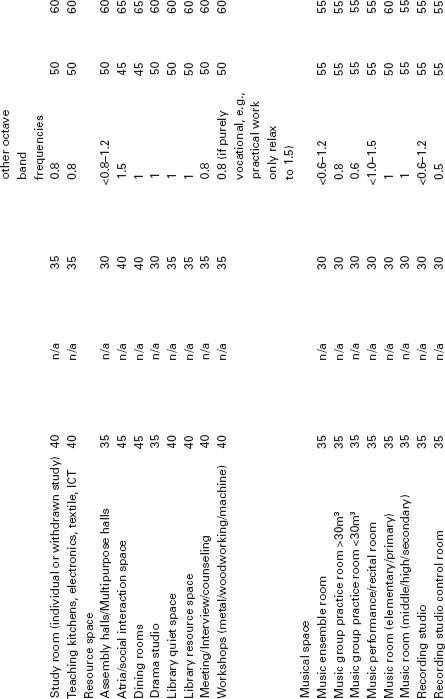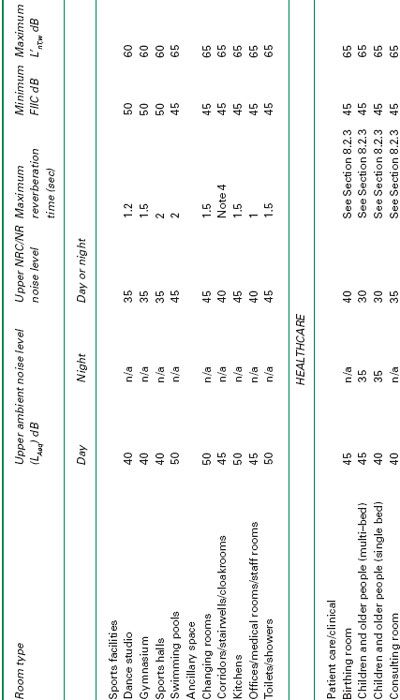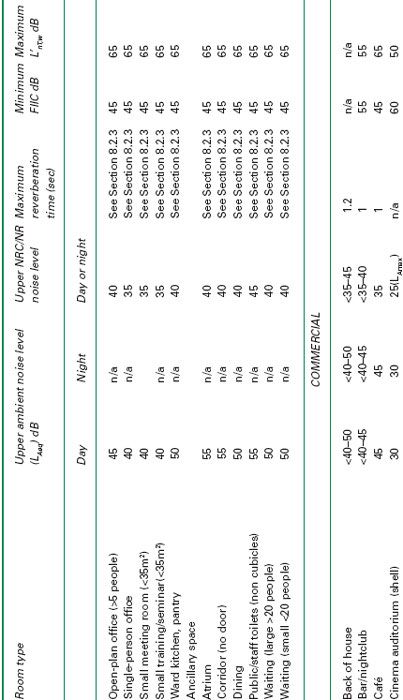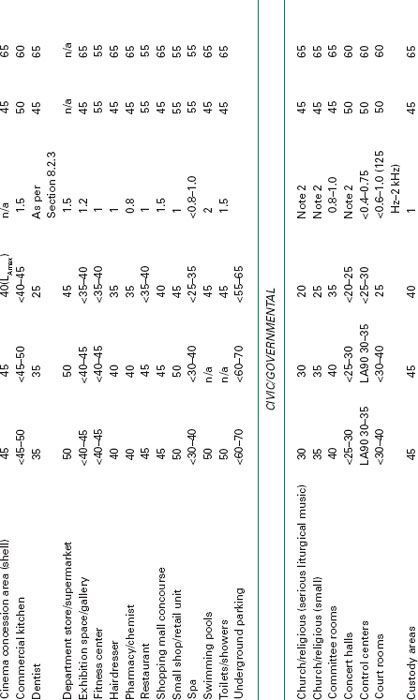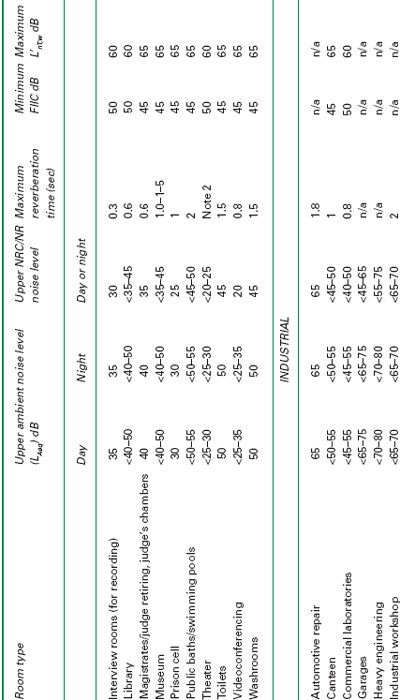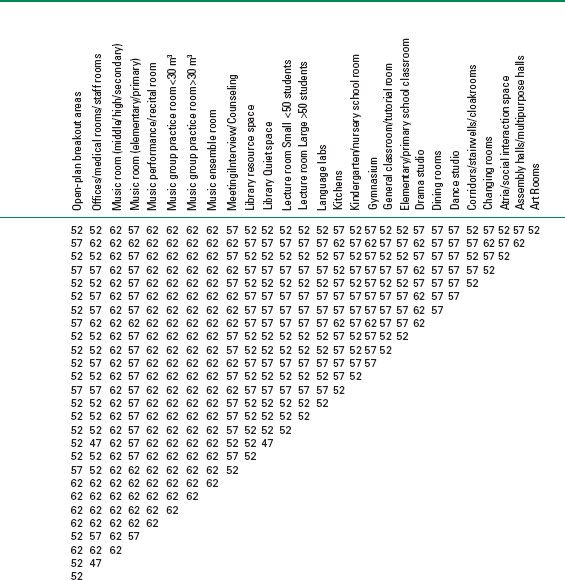INFORMATION PROVIDED IN THIS APPENDIX sets good to reasonable standards for:
 Ambient noise associated with sound from sources outside the room under consideration. These are set as average noise level (LAeq). No time parameter has been set, but a minimum measurement period would be one hour. Daytime periods are assumed to be 7:00AM to 11:00PM; nighttime periods are assumed to be 11:00PM to 7:00AM.
Ambient noise associated with sound from sources outside the room under consideration. These are set as average noise level (LAeq). No time parameter has been set, but a minimum measurement period would be one hour. Daytime periods are assumed to be 7:00AM to 11:00PM; nighttime periods are assumed to be 11:00PM to 7:00AM.
 The control of noise within a room from mechanical equipment either associated with the building or with an adjoining building/activity. These are defined as Noise Criteria (popular in North America) or Noise Ratings (popular in Europe) and are based on the performance levels across a frequency range. Table 6.3 details the most common rating curves.
The control of noise within a room from mechanical equipment either associated with the building or with an adjoining building/activity. These are defined as Noise Criteria (popular in North America) or Noise Ratings (popular in Europe) and are based on the performance levels across a frequency range. Table 6.3 details the most common rating curves.
 The control of echoes within a room defined as the maximum possible reverberation time in seconds.
The control of echoes within a room defined as the maximum possible reverberation time in seconds.
 Impact sound insulation from floors above a room, in order to provide adequate control of noise from footfall. This is shown as the Field Impact Insulation Class (FIIC) or the single figure weighted Sound Transmission Level (L’nT,w), which are popular in North America and Europe respectively.
Impact sound insulation from floors above a room, in order to provide adequate control of noise from footfall. This is shown as the Field Impact Insulation Class (FIIC) or the single figure weighted Sound Transmission Level (L’nT,w), which are popular in North America and Europe respectively.
 Airborne sound insulation performance requirements for a range of room adjacencies by building type. These are presented as laboratory performance standards (STC for North America, and Rw for Europe). To determine on-site performance levels, these values can be adjusted by applying the rules of thumb outlined in Chapter 6 (Section 6.4.3).
Airborne sound insulation performance requirements for a range of room adjacencies by building type. These are presented as laboratory performance standards (STC for North America, and Rw for Europe). To determine on-site performance levels, these values can be adjusted by applying the rules of thumb outlined in Chapter 6 (Section 6.4.3).
 Airborne sound insulation performance requirements for a range of doors dependent on room type. Again these are displayed as laboratory performance levels (STC/Rw).
Airborne sound insulation performance requirements for a range of doors dependent on room type. Again these are displayed as laboratory performance levels (STC/Rw).
Table B.1 Recommended acoustic performance levels by room type
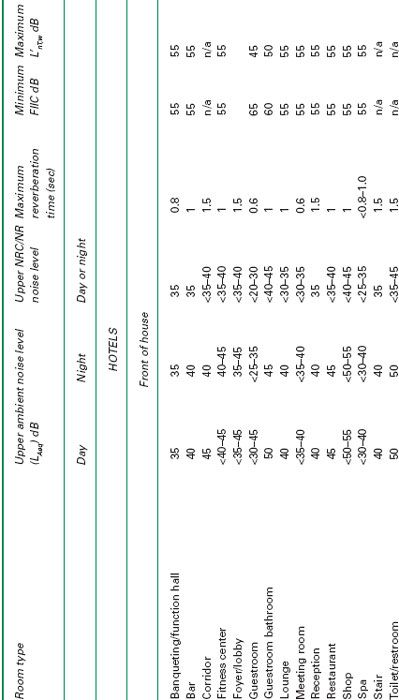
Table B.2 Suitable laboratory performance levels for separating partitions within a hotel development – STC/Rw (dB)
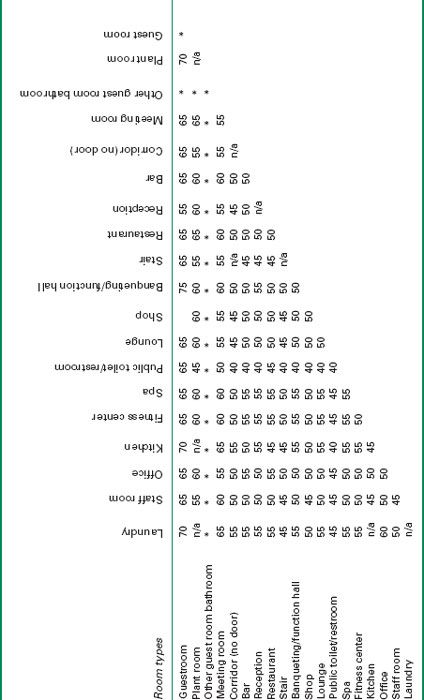
* Refer to performance standards detailed in Table 14.4
Table B.3 Suitable laboratory performance levels for separating partitions within an office development – STC/Rw (dB)
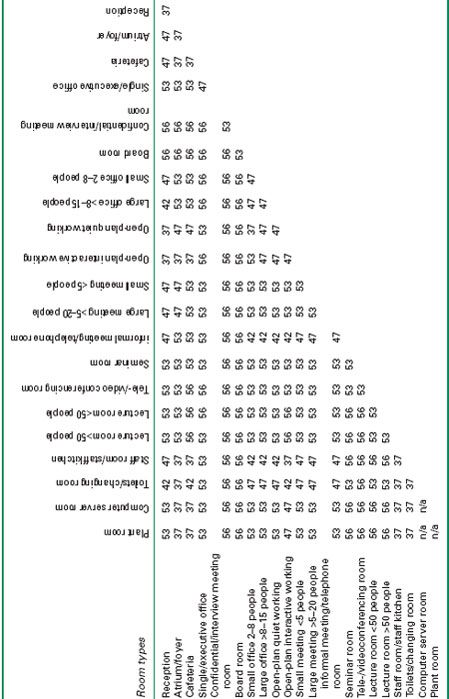
Table B.4 Suitable laboratory performance levels for separating partitions within an educational development – STC/Rw (dB)
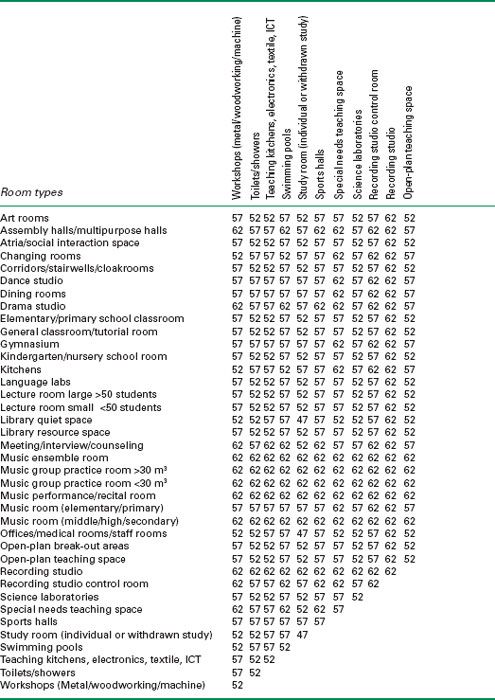
Table B.5 Suitable laboratory performance levels for separating partitions within a healthcare development – STC/Rw (dB)
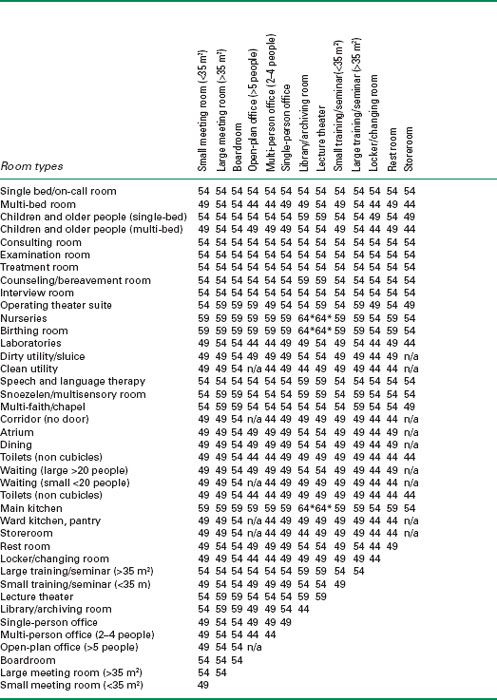
* Rooms where adjacencies require a minimum of Rw 64 dB should be avoided
1 The values outlined in the table provide good practice performance standards for unoccupied rooms with regards to ambient noise, noise from mechanical equipment, reverberation times, and impact sound insulation.
2 Suitable reverberation levels for these spaces are dependent on room volume and expected musical type. Eq. A.25 (in Appendix A) can be used to determine suitable optimum reverberation times.
3 Appropriate impact insulation levels for domestic rooms are outlined in Chapter 12.
4 Optimum reverberation times for corridor spaces associated with schools can be defined as providing a minimum area of absorbent material as detailed in Table 7.4.
Table B.6 Suitable laboratory performance levels for internal doors – STC/Rw dB
Door location | Suitable performance level STC/Rw (dB) | |
Hotels | ||
Bedroom – corridor | 35 | |
Interconnecting doors between bedrooms | Double leaf of 35 | |
Lounge | 30 | |
Function rooms | 30 | |
Offices | ||
Office | 30 | |
Meeting rooms | 35 | |
Commercial | ||
Kitchen | 35 | |
Spa | 30 | |
Fitness room | 30 | |
Restaurant | 30 | |
Bar | 30 | |
Auditorium to external | 45 | |
Auditorium to concession/lobby | 45 | |
Concession/corridor to external | 40 | |
Educational | ||
Serving hatch shutters | 18 | |
Interconnecting door (teaching space to teaching space) | 35 | |
Operable walls (drama/teaching – hall) | DnT, w 45 | |
Music to music (access via room) | 45 | |
Vision panels halls control rooms | 45 | |
Music room | 35 | |
Control room | 35 | |
Drama room | 35 | |
Multipurpose room | 35 | |
Special needs | 35 | |
All other teaching | 35 | |
Healthcare | ||
Ancillary space/office, etc. | 30 | |
Treatment/consulting | 35 | |
Civic | ||
Courtroom/judge’s chambers/confidential | 45 | |
Non-confidential | 35 | |
Interview rooms – recording | 45 | |
ASHRAE (2009) ASHRAE handbook. Atlanta, GA: American Society of Heating, Refrigerating and Air-Conditioning Engineers.
British Standards Institution (1999) Sound insulation and noise reduction for buildings, code of practice. S8233:1999. London: BSI.
Ministry of Justice (MOJ) (2007) Courts standards and design guide. London: Her Majesty’s Court Services.
